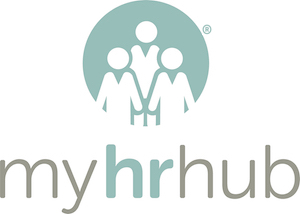
The truth is, many companies don’t know what to do with engagement survey data they’ve collected. For them, the exercise becomes an end unto itself. This is usually because their surveys are not designed in ways that yield actionable results or fit into a larger engagement strategy.
Whether you are just embarking on your engagement survey or sitting staring at a packet of engagement results, consider the following tips to make your initiative both more meaningful and more actionable:
1. Articulate your Goals
Why are you conducting a survey? The obvious answer is “We want to see what our engagement is” or “We want to improve engagement.” Unfortunately, many companies stop there. Measuring engagement is not enough. You need to decide in advance what you want to do with the data you are collecting. Are you trying to benchmark against your industry? Are you trying to unpack a problem you’ve already detected? Are you trying to gain feedback from employees? Are you trying to increase opportunities for improvement? In addition to our recommended questions, get input and buy-in from all areas and levels of the organization before you put a single question on the survey form. This will help you to determine how you will measure your success or failure in a qualitative way.
2. Effective Questions
There is an unlimited amount of questions you can ask. We have taken the hard work away and have recommended 12 key questions. In our experience these yield useful information that can help understand engagement and help you get on track to improving this, if actioned in the right way.
3. Don’t Work in a Vacuum
A survey alone doesn’t make an engagement strategy. Your survey should be a part of a larger culture of engagement. Survey results must be meaningful to managers and executives or they will not drive behavioral change. Furthermore, they must be trustworthy in the eyes of all employees—which means two things:
1 You should include employees in every level of the process.
2 You must have executive sponsorship to increase confidence that change will be supported.
Once you have your results, communicate them back to the company along with the plan you’ve formulated in reaction to them. You might be asking “but what if our results are awful?”. All the more reason to share the results and your plan to address the problems. If the survey shows several areas of concern, you can be sure everyone already realizes it.
4. Surveys are Only a Starting Point
Surveys are not the end goal. They are merely a tool to begin a conversation with your employees, or to frame that conversation for managers and executives. This is the start of your Engagement journey and everyone needs to be on that journey.
5. Take Action or Don’t Bother
Putting together a survey like this and pushing it through an organization takes a huge effort. It is little wonder that so many Companies just stop there. If you are not committed to understanding, listening and making improvements, don’t even conduct a survey—because employees who are not surveyed at all are more engaged than those whose companies survey them but take no action.
Here is a list of actions to plan for your survey and beyond:
- Introduce to all of your Exec, Managers and employees the reason for doing the survey. Get senior management buy-in at the outset. This is critical for survey design, action planning and communication. If communications can come from the CEO or MD, so much the better. Employees are more likely to respond if they believe that senior management is not only listening to their concerns, but is prepared to act on them.
- Make sure you have full support of the survey from senior managers and that they take full ownership of the survey results. Assign an internal project manager or work with an external consultant who will coordinate and communicate closely with your management team.
- Be prepared to act. If you don’t act decisively on the results, however unpalatable they are, both the management team and the survey loses credibility, affecting future response rates.
- Explain what you would like to get from this, when it will be happening and how you will follow up and continue to communicate.
- Stress in the communications that all responses will be strictly confidential. This will help increase the honesty of the responses and the response rate itself.
- Promote the survey internally with an email notification, a notice on communal bulletin boards, or on the company Intranet. Market the benefits of participating in the employee survey to help increase response rates.
- Conduct the survey, ensuring everyone has access to the survey and it can be completed on time, ideally in full.
- Review the survey results and analyze the information to understand what is happening in your organization, the good, the bad and the ugly.
- Look at Key Performance Indicators (KPIs) if you have this information. How does the survey data align with other HR metrics such as staff turnover; customer measures such as satisfaction and financial measures such as profit? Values such as trust and communication are seen as leading indicators of performance; if these start to show poor scores in employee surveys, poor customer satisfaction levels and a drop in performance are likely to follow. The reverse, of course, is also true.
- Distribute and explain the survey results to the whole organization and communicate the results promptly. The longer the gap between the survey and feedback the greater the risk of inactivity. So share the results and what steps the business proposes to take as quickly as you can.
- Discuss what those results mean for the organization.
- Select two or three key items to work on over the next 12 months.
- Brainstorm follow-up actions with the right ‘owners’ and complete a plan for improvement.
- Follow up regularly on the plan, and on how people are feeling about the team’s progress toward meeting its goals.
- Tell employees when you do take action. Whatever actions you take make sure employees know. ‘We’re doing this because you told us in the survey that this was important to you.’ This will help reinforce management credibility.
- An engagement survey is the first logical step in a strategy to improve employee engagement, but don’t let it become your entire strategy. With a little bit of planning and a little more follow-through, you can make a frustrating and puzzling process into something that will truly drive results for your organization.
- Avoid making the survey a one-off event. The survey should be part of a continuous management process of survey-action-resurvey which is the responsibility of employees and managers at all levels, not just HR. Lastly, run an employee satisfaction survey at the same time each year to measure the difference in satisfaction levels and highlight any problem areas. You can benchmark results against previous years’ data.
For further advice or for full support in designing, conducting, reviewing results resulting in a short/medium and long term Business Improvements Plan, contact Rebecca Bull at My HR Hub, www.myhrhub.co.uk.


Recent Comments